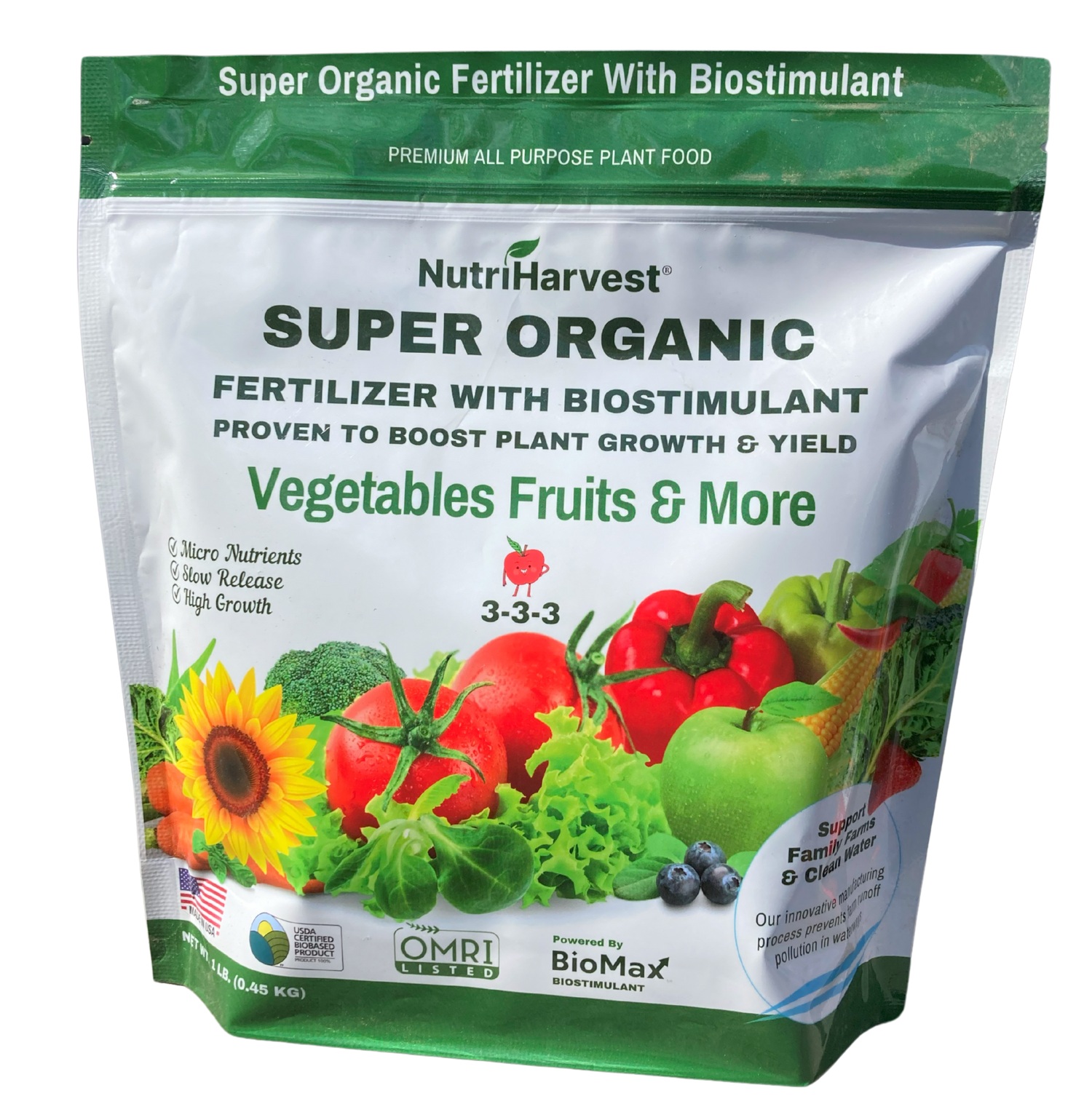Pollinators are essential for crops
Pollinators are insects, birds, and other animals that help to pollinate plants by transferring pollen from one flower to another. Pollinators are essential for the reproduction of many plant species and for the production of our food crops.
Pollinators are an essential part of the global ecosystem, playing a critical role in the pollination of many food crops, wildflowers and other plants. Unfortunately, the use of chemical fertilizers is one of the major causes of pollinators disappearing. Agronomists have been warning us for quite some time, for instance, the Utah State University extension program recently highlighted the factors contributing to bee decline [1].
Pollinators are disappearing rapidly
“Bees are under great threat from the combined effects of climate change, intensive agriculture, pesticides use, biodiversity loss and pollution. The absence of bees and other pollinators would wipe out coffee, apples, almonds, tomatoes, and cocoa to name just a few of the crops that rely on pollination. Countries need to shift to more pollinator-friendly and sustainable food policies and systems."
Pollinator populations have been declining at an alarming rate in recent years, with many species facing extinction. This decline is a serious issue, as pollinators play a vital role in our ecosystem and economy. Leading scientists and entomologists have estimated [2] that:
- More than 40% of insect species are declining and a third are endangered.
- The rate of extinction of insects is 8 times faster than that of mammals, birds and reptiles.
- The total mass of insects is falling by a precipitous 2.5% a year, according to the best data available, suggesting they could vanish within a century.
Causes of pollinator decline
Habitat loss and fragmentation
The loss and fragmentation of pollinator habitat, including meadows, grasslands, and forests, is a major factor in the decline of these insects. Urbanization and development often lead to the destruction or fragmentation of pollinator habitats.
Use of Chemicals
The use of chemical pesticides, including insecticides, herbicides, fungicides, and synthetic fertilizers can harm pollinators by killing them or weakening their immune systems. Pesticide and fertilizer drift, in which chemicals are carried by the wind to areas where they were not intended to be used, can also harm pollinators.

Extreme Weather Events
Changes in weather patterns and fluctuating temperatures can alter the timing and availability of flowers, affecting the ability of pollinators to find food. Extreme weather events such as droughts and floods can also have a negative impact on pollinator populations.
Invasive species
Non-native plants and animals that are introduced into an ecosystem can outcompete native pollinators for resources and can also introduce diseases that can harm native pollinator populations.
The role of chemicals in pollinator decline
Types of chemicals that harm pollinators
Chemicals that are toxic to pollinators include insecticides such as neonicotinoids and pyrethroids, as well as herbicides like glyphosate. Synthetic fertilizers also harm pollinators.
Effects of chemical exposure on pollinators
Chemical exposure can lead to death, impaired development, reduced fertility, and weakened immune systems in pollinators.

Examples of chemical use that has led to pollinator decline
The widespread use of neonicotinoids in agriculture has been linked to the decline of bees and other pollinators. The use of herbicides in landscaping and lawn care has also contributed to the loss of flowering plants, which are an important source of food for pollinators.
Solutions to the pollinator decline problem
Reducing chemical use in agriculture and landscaping
Using integrated pest management (IPM) techniques, which involve a combination of chemical, biological, and physical control methods, can help to reduce the use of pesticides and protect pollinators.
Fertilizers such as NutriHarvest® Organic Fertilizers products provide non-chemical nutrients to fertilizer soil while supporting well-being of pollinators.
Protecting and restoring pollinator habitat
Conservation programs, land management practices, and the creation of pollinator-friendly gardens can help to protect and restore habitat for these insects.
Planting pollinator-friendly gardens
Individual and community gardens that provide food and habitat for pollinators can help to support these insects. This can be achieved by selecting native flowering plants that bloom at different times throughout the growing season and avoiding the use of pesticides in the garden.

Supporting policies that protect pollinators
Advocating for stricter regulations on the use of pesticides and supporting legislation that promotes the protection of pollinator habitat can help to protect these insects.
How could we support pollinators?
Realizing the importance of addressing the issue of pollinator decline
Pollinators are essential for the health of our ecosystem and the production of our food crops. It is important to take action to address the issue of pollinator decline in order to preserve these essential creatures for future generations.
The role that individuals and communities can play in protecting pollinators
By making informed choices about the products we use and the way we manage our gardens, farms, and landscapes, we can help to create a more pollinator-friendly environment.
Recommended Products:
References
[1] Mull, Ann, JayDee Gunnell, Sheriden Hansen, Ricardo Ramirez, Andree Walker, Cody Zesiger, and Lori Spears. Factors Contributing to Bee Decline. February 2022. Published by Utah State University Extension and Utah Plant Pest Diagnostic Laboratory February. ENT-235-22-PR.
[2] Damian Carrington, Environment editor. Plummeting insect numbers 'threaten collapse of nature'. The Guardian. February 10, 2019.
[3] Declining bee populations pose threat to global food security and nutrition. 20 May 2019. Food and Agriculture Organization of the United Nations.
[4] Sandra R Schachat, Conrad C Labandeira, Are Insects Heading Toward Their First Mass Extinction? Distinguishing Turnover From Crises in Their Fossil Record, Annals of the Entomological Society of America, Volume 114, Issue 2, March 2021, Pages 99–118.



